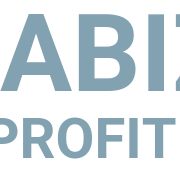Warning to Virginia Nonprofits-Watch Out if a Major Donor Declares Bankruptcy
Who would think that the bankruptcy of an emerging growth company could impact the nonprofit community in a dramatic way? Well, ask around the RVA nonprofit community and how they are being impacted by the Health Diagnostics Laboratory (HDL) bankruptcy case which has been trudging its way through bankruptcy court since 2015 with no end in sight. How does this happen? In a nutshell, when a bankruptcy trustee is appointed for a bankrupt company like HDL in a Chapter 11 liquidation case, the trustee owes a fiduciary duty to maximize the value of the estate for the benefit of creditors. This often means that bankruptcy trustees pursue lawsuits against third parties with whom the bankrupt company had done business or interacted in some fashion. Many of these lawsuits are strict liability “clawback” suits–not alleging any wrongdoing by a third party, just pursuing a return of money or assets previously paid to a third party, including charitable donations to a nonprofit organization, that in meet the legal definition of a “fraudulent transfer.”
Both federal and state law allow for clawbacks of fraudulent transfers. Under federal law, a bankruptcy trustee may void and undo a transfer if the transfer involved an actual intent of the debtor to hinder, delay, or defraud; or the debtor received less than a reasonably equivalent value in exchange for such transfer (in addition to other factors that evidence fraud, such as debtor insolvency at the time of or immediately after the transfer). The look back period for these types of suits is two years under federal law, and there is no specific statute of limitations under Virginia law (See Section 55-80 of the Code of Virginia).
When a clawback suit is brought seeking the return of a charitable donation made to a nonprofit, it often leads to significant stress, unpleasantness, and hardship to the recipient nonprofit organization. The legal fees to fight one of these clawback suits can easily run into the tens of thousands of dollars, not to mention the risk of having to return donated funds that have perhaps already been deployed by the nonprofit.
What can a nonprofit do to minimize the risk or impact of such a disaster? Depending upon the surrounding facts and circumstances, here are a few general tips:
- Know Your Donor – For significant gifts, the more you know about your donor and its financial condition, the less likely you will be caught by surprise in the future.
- Check with Your Insurance Professional–Consider whether it is possible or cost-effective to insure against this risk in the context of accepting a significant donation or pledge.
- Maintain Adequate Reserves–While hopefully the risk of getting caught up in a bankruptcy fraudulent transfer suit is remote, this is one of many reasons why a nonprofit organization should maintain reserves.
- Be Prepared to Fight Back–Clawback demands from bankruptcy trustees are often subject to negotiation, so don’t be too quick to give up, but hiring legal counsel is advisable.


Leave a Reply
Want to join the discussion?Feel free to contribute!